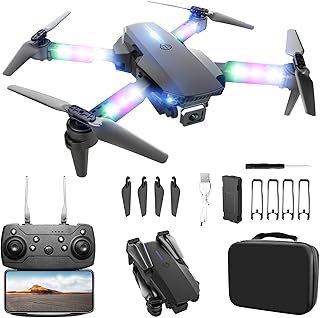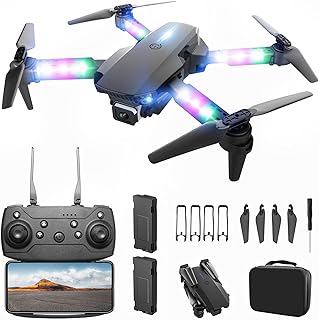BEZGAR Drone: Innovation and Technology - A Deep Dive
While "BEZGAR" doesn't seem to be a recognized drone brand, I can still discuss general innovations and technologies used in drones today. Let's break down some key areas:
1. Flight Control and Navigation:
* Advanced Autopilots: Drones rely on sophisticated autopilot systems to navigate, maintain stability, and execute complex maneuvers. These systems use sensors like gyroscopes, accelerometers, and magnetometers to gather information about the drone's orientation and position.
* GPS and RTK: GPS allows for accurate positioning, while RTK (Real-Time Kinematic) systems offer even higher precision, essential for tasks like mapping and surveying.
* Obstacle Avoidance: Modern drones utilize sensors like ultrasonic and lidar to detect obstacles and adjust their flight paths.
* Artificial Intelligence (AI): AI algorithms are being integrated into drones for advanced route planning, object recognition, and even autonomous flight.
2. Power and Battery Technology:
* High-Density Batteries: Drones demand high-capacity batteries that can sustain flight for extended periods. Lithium-polymer batteries are the standard due to their energy density and lightweight design.
* Battery Management Systems: These systems optimize battery performance and safety, ensuring efficient power usage and preventing overcharging or overheating.
* Fuel Cells: Research and development of fuel cell technology for drones is ongoing, offering potential for longer flight times compared to batteries.
3. Camera and Imaging:
* High-Resolution Sensors: Drones are equipped with cameras ranging from standard HD to high-resolution 4K or even 8K sensors, capturing stunning footage.
* Gimbal Stabilization: Gimbal systems provide camera stability, ensuring smooth and steady video even during flight.
* Thermal Imaging: Infrared cameras allow drones to see in thermal wavelengths, useful for search and rescue, inspection, and monitoring.
* Multispectral Imaging: Advanced drones can capture images in multiple spectral bands, providing information beyond visible light, valuable for agricultural and environmental applications.
4. Communication and Data Transmission:
* Wi-Fi and Bluetooth: These protocols allow for basic control and data transfer over short distances.
* Cellular Networks: Drones equipped with cellular modems can communicate over longer ranges and transmit data back to a control station.
* Radio Frequency (RF) Communication: Specialized RF systems enable reliable communication between drones and ground stations, particularly in areas with limited cellular coverage.
5. Applications and Innovations:
* Delivery and Logistics: Drone delivery is becoming increasingly common for packages, medications, and even food.
* Inspection and Maintenance: Drones are used for inspecting infrastructure, pipelines, and other hard-to-reach areas.
* Surveillance and Security: Law enforcement and security agencies utilize drones for aerial monitoring and reconnaissance.
* Agriculture and Forestry: Drones are revolutionizing agriculture, enabling precision spraying, crop monitoring, and even drone-assisted pollination.
Looking Forward:
The future of drone technology is promising, with ongoing research and development in areas such as:
* Artificial intelligence and autonomy: Drones will become increasingly autonomous, capable of making decisions and executing tasks without human intervention.
* Extended flight time: Research into fuel cell technology and more efficient battery designs will lead to drones capable of staying aloft for longer periods.
* Increased payload capacity: Drones will become stronger and more capable of carrying heavier payloads, opening up new possibilities for their use.
Note: If you are interested in a specific drone brand or model, please provide me with more information. I can then provide you with a more focused analysis of its features and technology.


